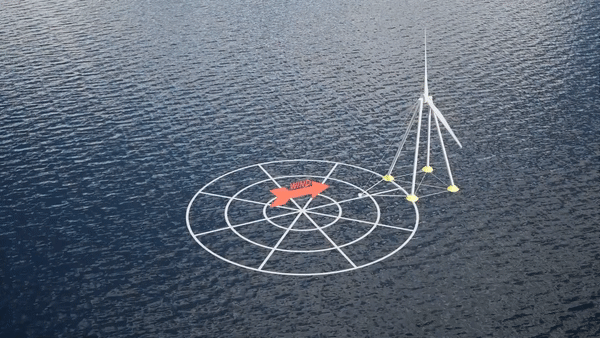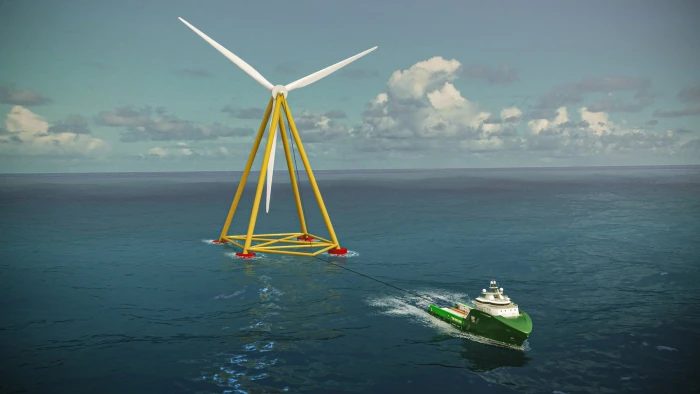In a groundbreaking development for the renewable energy sector, an ingenious offshore wind turbine prototype has taken its maiden voyage off the coast of New Bedford, Massachusetts.
What sets this innovation apart? Instead of the conventional single anchor tower, this cutting-edge creation boasts a pyramid base that not only offers stability but also aligns itself passively with the prevailing winds.

As the race to harness the power of wind energy continues to surge, the sheer scale of modern wind turbines has necessitated a migration to offshore locations where the untamed forces of the open sea can be harnessed to the fullest. While the cost of wind-based energy has been steadily plummeting over the years, the pursuit of wind farms farther out at sea brings with it the daunting challenges of mounting costs and the logistical complexities of installation.
Enter T-Omega Wind (TOW), headquartered in Boston, Massachusetts, with a radical departure from the norm, poised to simplify the installation and maintenance of offshore turbines.

The Pyramid-Based Innovation
TOW’s founders have addressed a fundamental challenge plaguing the wind industry with a brilliantly simple yet innovative solution. Their proposition is straightforward but transformative: for every ton of weight required above the water to maintain the stability of a central tower, an additional four tons of ballast must be submerged below the waterline. The TOW design brilliantly eliminates the need for this heavy counterweight, resulting in substantial savings in materials and construction expenses.
Deviating from the conventional single-sided pinwheel turbine design, TOW employs a double-sided axle that is supported at both ends. The weight-bearing load at each extremity is gracefully managed by diagonal supports, ingeniously forming a pyramid-shaped base when connected to the turbine’s lower structure.
To ensure that the entire assembly remains afloat, the pyramidal base is equipped with strategically placed floats while remaining tethered to the seabed. This design not only prevents the turbine from drifting away, but also imbues it with the remarkable ability to self-align with the prevailing wind direction.

A Game-Changer in Installation and Maintenance
Beyond the remarkable engineering feat of this design, the real game-changer lies in the ease of assembly and maintenance. Turbines can be conveniently assembled onshore before being towed out to the wind farm location, offering a level of efficiency that was previously inconceivable.
As if that weren’t enough; maintenance facilities can be stationed onshore, obviating the need for utility companies to invest in costly crane ships to oversee the upkeep of their offshore turbines. This results in a significant reduction in operational expenditures, promising a brighter future for sustainable energy production.
More To Discover
- Wind Turbines And The Catastrophic Case of Bat Attractions
- Safest Energy Sources: A Comprehensive Guide to Impact and Sustainability (Wind, Solar, Fossil Fuels, Hydro, Nuclear)
- Concerns Rise Over Possible Link Between Whale Deaths and Offshore Wind Farms; Facebook Faces Backlash Over Censorship
- Setback for US Offshore Wind Ambitions as Orsted Halts Major Projects Citing Economic Pressures
Despite the sheer audacity of their innovation, TOW’s journey has only just begun. They have conducted rigorous wave-tank testing with a scale model, demonstrating the potential of their design to withstand staggering waves reaching up to 98 feet (30 meters).
These promising results herald the advent of a new era in offshore wind energy, where efficiency, cost-effectiveness, and environmental consciousness converge to power a greener world.





















